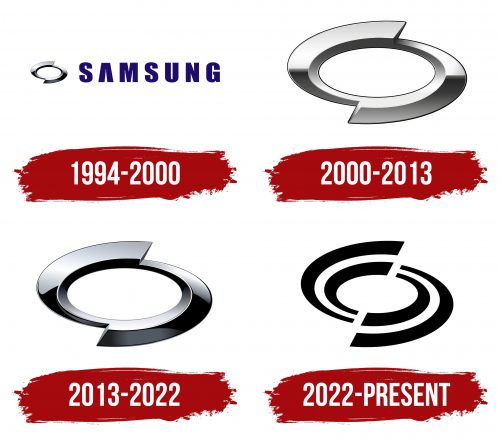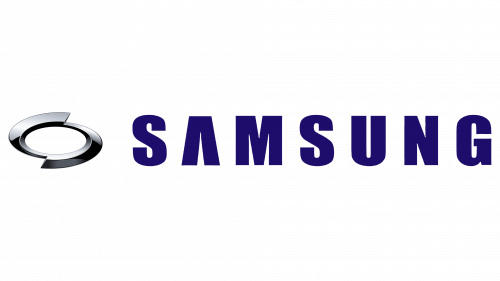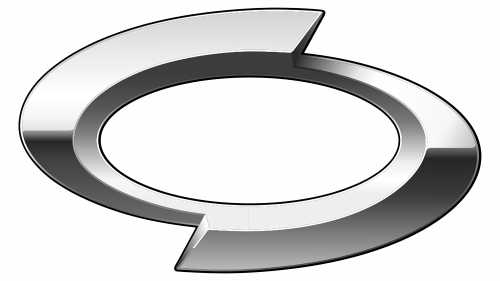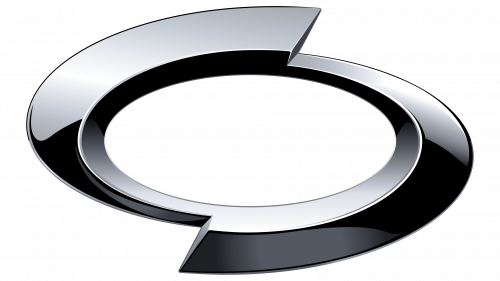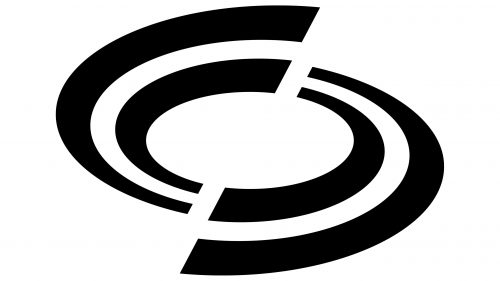The Renault Korea Motors logo embodies the strength and reliability of modern vehicles. It symbolizes bold innovations, dynamism, and energy, characteristic of the Asian brand. The emblem’s elegant shape emphasizes the vehicles’ prestige, which became popular when Samsung owned the company.
Renault Korea Motors: Brand overview
The background of Renault Korea Motors began with the establishment of Samsung Motors, a branch of the massive South Korean corporation Samsung Group, in 1994. The Samsung Group made its entry into the automobile sector known that year as part of its plan to diversify its operations and rise to prominence in the global automotive industry.
Nissan Motor Company and Samsung Motors inked a technical collaboration agreement in 1995. Samsung needed this relationship to access an established automaker’s technologies and expertise.
Construction on the Samsung Motors facility in Busan, South Korea, started in 1996. The plant, developed using cutting-edge technologies, could produce 240,000 cars annually.
However, the 1997 Asian financial crisis derailed the company’s goals. Due to economic challenges, Samsung Group was compelled to reevaluate its investments, which increased the likelihood of the car division closing.
Despite the financial crisis, Samsung Motors debuted its first model, the SM5, based on the Nissan Maxima platform in 1998. Although the car was favorably received in the Korean market, the business faced financial difficulties.
A significant development in the company’s history occurred in 2000 when the French automaker Renault purchased 70% of Samsung Motors’ shares. Renault Samsung Motors became the new name of the corporation.
Under Renault’s management, the company started growing its product range. The SM3 model, based on the Renault Megane, was released in 2002. This marked the incorporation of Renault technologies into the company’s product range.
The QM5 (export name Renault Koleos) was Renault Samsung Motors’ first SUV released in 2004. Introducing this car marked a significant milestone in the company’s growth within the SUV industry.
The decade of the 2010s saw both new model lineups and continued evolution. New models like the QM3 (Renault Captur) and QM6 and updated SM3, SM5, and SM7 iterations were also introduced.
2018, the business declared it would modernize its product line and boost exports. This involved increasing production capabilities and creating new models.
In 2020, the corporation’s ownership structure was altered. Renault bought more shares from Samsung Group to increase its ownership position to 80%.
Another big shift came in 2022 when the company changed its name to Renault Korea Motors. This name better reflected the change in ownership and strengthened its relationship with the Renault brand.
Renault Korea Motors declared in 2023 that it would electrify its model range. By 2025, the business plans to introduce its first entirely electric vehicle. This action was a component of the global plan of the Renault Group to shift to clean technologies and satisfy the increasing demand in the Korean market for electric vehicles.
A revised iteration of the company’s well-liked sedan, the SM6 (marketed globally as the Renault Talisman), was unveiled in 2023. The upgraded model included improved technology features and a new exterior and interior design.
In 2024, Renault Korea Motors fortified its partnership with other Renault Group brands, notably Alpine. It was revealed that the Busan plant would be producing some Alpine models locally for the Asian market—this choice aimed to increase both companies’ market share in the area.
Throughout its existence, the company has surmounted early challenges to establish itself as a prominent exporter and participant in the Korean automotive industry.
Meaning and History
What is Renault Korea Motors?
This division of the Renault Group specializes in producing various passenger cars for export and the Korean market. The company creates vehicles that meet global standards and local tastes, combining French automotive engineering with Korean manufacturing expertise. Sedans, SUVs, and electric vehicles are all part of the company’s lineup, which often modifies Renault’s platforms and technologies to cater to the preferences of Korean buyers. The company has made a name in the Korean automotive market by creating reliable, stylish cars that blend European design with traditional Korean sensibilities.
1994 – 2000
Renault Korea Motors was founded by the conglomerate Samsung and thus used its wordmark—a strict blue inscription composed entirely of capital letters. The font, inspired by the confident lines of Helvetica, delights minimalism enthusiasts. Symmetrical glyphs impress with their shape, combining wide, even strokes, refined curves, and sharp angles.
The massive elements convey a sense of reliability and stability, while the smooth roundings indicate the brand’s dynamism. The “A” without a crossbar reflects a modern aesthetic that welcomes the absence of unnecessary details. The logo is also characterized by:
- Vertically elongated font
- Sans-serif style
- Wide spacing between letters
- Futuristic design
The automaker used the Samsung wordmark because it was known as Samsung Motors from 1994 to 2000. To differentiate itself from the parent company, it added an individual symbol resembling a primitive shuriken with two points. The old emblem of the South Korean conglomerate inspired its oval shape.
The graphic mark looks like two boomerangs connected at their free ends. They are associated with lightning speed, effectively conveying the energy of moving vehicles. The oval element is very small compared to the inscription, but its metallic texture is visible even in this reduced version. The silver gradient with black shadows and white highlights creates a sense of three-dimensionality. This is a symbol of the innovations the brand strives for.
2000 – 2013
In 2000, the word “SAMSUNG” disappeared from the logo because the company was acquired by Renault and renamed Renault Samsung Motors. The rebranding culminated in an updated emblem highlighting the car manufacturer’s individuality. Designers chose not to create something new but to reinterpret the existing graphic symbol, giving it a new life.
As a result, the silver oval separated from the inscription and became an independent visual symbol. It looks like it was cut in half and then reconnected with mismatched ends, giving the figure a sense of lightning-fast energy, like a flying shuriken. This metaphorical image fits the automotive brand well because the oval with two pointed protrusions creates the illusion of movement. The internal void adds lightness to the logo, which is associated with speed and the absence of obstacles on the way to the goal.
Designers retained the emblem’s metallic texture to show the company’s modernity and connection with innovative materials. However, the gradient became smoother, making the oval less shiny—it now resembles chrome metal. The outer side of the figure is clearly divided into two parts: a dark bottom and a light top. The boundary runs along a straight horizontal line, which was not present before. This geometric precision symbolizes balance and orderliness.
2013 – 2022
The company did not change the emblem’s shape because this makes it recognizable. The elliptical figure with two pointed protrusions perfectly reflects the dynamics of high-speed cars. It creates a sense of continuity and completeness, characterizing Renault Samsung Motors as a cohesive and trustworthy brand.
However, the desire for change led the company to experiment with the gradient. There’s nothing new here—the logo precisely replicates the old emblem used before 2000. Its texture mimics a smooth metallic surface, which is associated with the latest technologies in the automotive industry, reliability, and quality.
The silver color evokes metal parts, symbolizing strength and durability. The smooth transition of shades gives the emblem sophistication, making it more expressive. The chrome shine creates the illusion of three-dimensionality, enhancing the sense of dynamism.
In this version of the logo, the color difference is very noticeable. The silver areas transition to white and black, with gradient lines that are not perfectly smooth. This contrast makes the oval more noticeable and expressive.
2022 – today
In 2022, the company was renamed Renault Korea Motors due to the agreement’s expiration to use the Samsung trademark. This inspired another rebranding, which took a path of simplification. The new logo lacks metallic texture, gradients, and three-dimensionality. It fully embraces a minimalist style.
Designers aimed to convey the old shape using four black arcs. Their arrangement makes them appear like halves of two ovals, cut diagonally. The curved lines symbolize a forward-looking approach, and the wide gap between them indicates openness and readiness for change, which is crucial in the automotive industry.
The emblem’s symbolism is based on ideas of movement and continuous progress, so the oval halves are shifted in opposite directions. This asymmetry characterizes Renault Korea Motors as a progressive brand that is flexible in its decisions and unafraid of experimentation.
To adhere to minimalism, designers made the logo black and white. These colors give it a sense of rigor and elegance. Black represents strength, stability, and reliability. White, on the other hand, signifies purity, simplicity, and modernity. The contrast between them makes the automotive brand’s symbol more noticeable.

